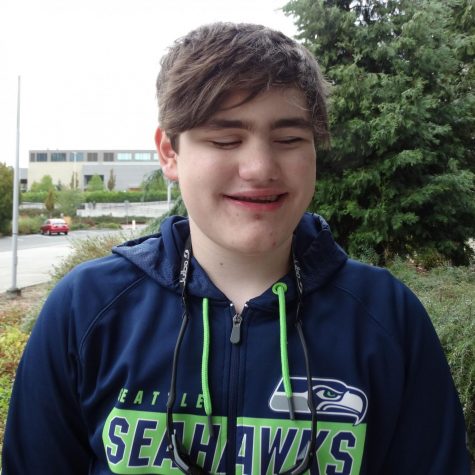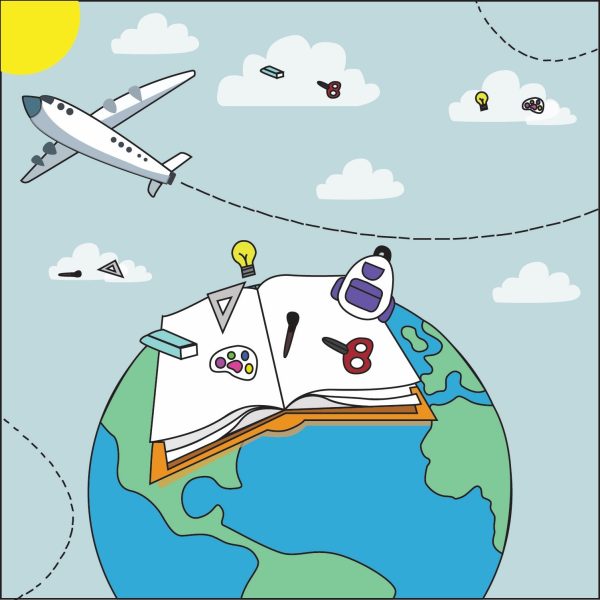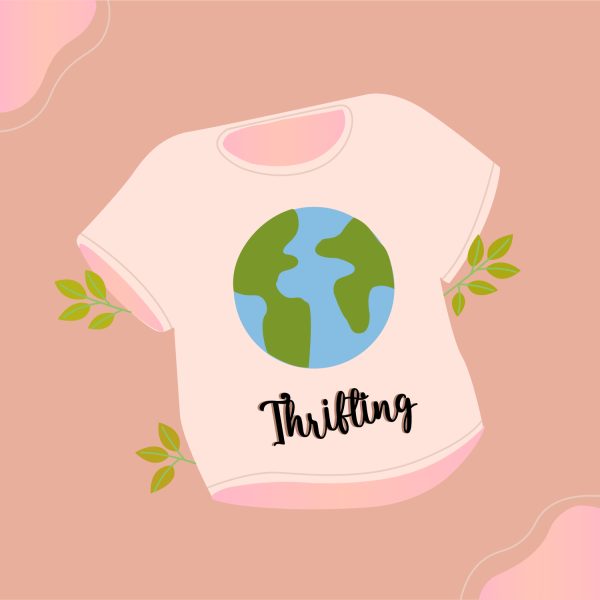Students and Blindness
December 1, 2021
Many students around the globe have it tough with the struggles of balancing their school, social, and home lives. However, if you add on blindness, it may make it harder. This is not to say sighted students don’t struggle, but if you add on the difficulties of navigating school, accessing new tech, or just being able to access schoolwork at all, it may seem more difficult.
Because there is such a large scale of eye conditions, the tasks of accessing schoolwork, navigating school, and learning new technology may range from less difficult to potentially more complicated. Some students, like in the case of sophomore Fischer Skroch, do not require much assistance from a Teacher of the Visually Impaired (TVI) or a Braillist. Skroch says that “they provide me with a monitor to connect to the document camera and also provide larger copies of print paper for me.” However, in seventh grader Janhavi Balasubramanian’s case, there are some more struggles. She says, “Some websites are not accessible. Sometimes selecting an option on a survey can be difficult, for example.” In fact, many students say they experience struggles with accessing some websites. Eighth grader Boon Dumrong reveals that “some issues I have are not understanding some graphics or some unlabeled buttons. In science, websites where there is an interactive simulation (where it is completely graphics) will not be accessible.” He went on to explain how last year during remote learning, his para (one-on-one) had to build special contraptions for him to complete and understand the assignment. Additionally, eighth grader Amelia Laing explained, “Sometimes a teacher will use a website that is not accessible or will send me something that is an image.” Many PDFs and websites such as Canva and Nearpod are generally not accessible for blind students. TVI Jen Soltis says that “I will say if you use these inaccessible websites, it causes more work for us.” She also says, “The GenEd teacher has to propose an alternate curriculum if the tools they use are not accessible.”
Another issue that visually impaired students may face is how they access their school work. Many, for example, will use a computer with a screen reader that reads what is on the screen to access Canvas assignments. Dumrong stated, “I use JAWS, which explains what is on the screen that may be navigated by using the arrow keys and tab.” JAWS is an example of a screen reading software that many blind or low vision people use today. Other tools they may use include a talking calculator for math and science, a braille note, and a braille writer. A braille writer is a machine that produces braille onto paper, mainly used for math in many cases. A braille note is a device that outputs braille on the screen where you can navigate; it can be compared to a mini computer. You are able to write in documents, listen to music, and search the web.
Many may also wonder how blind or visually impaired students can navigate in the environment around them. Seventh grader Leo Listwon explained, “I have memorized my route, sometimes using my white cane. I can also leave early from classes so I am not surrounded by too many people.” Also, seventh grader Sasha Kolyshkina told me that “I use a cane to let people know that I have low vision and I try to walk slowly so I don’t knock into anyone.” A cane is a tool that helps blind or low vision students to navigate their surroundings by sweeping it from side to side. College graduate Becca Weber explains her method of navigation by saying, “I use my cane and some of my usable vision. Also, I will sometimes ask someone to help me if I don’t know where I am going.” She and others will also use navigation apps on her phone to help get to a desired location as well. It is already difficult for these students to navigate, let alone in a big crowd of people. Dumrong says, “Usually, I try to move at a slower pace and I reach my cane outward and vertically to find people’s feet.” He says, “It is much more difficult because I can’t use echolocation. And sometimes I will use sighted guide if it is a new setting as well.” Dumrong also explained some of his struggles with navigation. He says, “I struggle with non-lighted intersections because you have to hear for the lull in traffic. So if it is super loud nearby, it can be hard to hear.”
Blind or low vision students are generally provided with a TVI, which provides them with skills such as assistive technology, career exploration, cooking, and self advocacy. Soltis says, “I do some work making documents accessible like PDFs. I will usually do it if this is the first time we have seen it in this specific format.” Usually, the braillist will make documents accessible. Braillist Kim Osgood says, “Math is very tedious to make accessible because you have to convert it from print to braille, symbol by symbol.” They use a program called Duxbury that translates word documents or PDFs into braille on the computer, and then they will emboss it on a special braille embosser. Balasubramanian is provided with various vision services. She explains, “They help describe pictures or videos for me as well as understand what is written on the board. They also make many assignments accessible and put them in my OneDrive.” Osgood’s advice to teachers is “If the teachers have the materials available to them and they know their schedule, pass it on to me.”
Teachers not giving braillists enough time to make work accessible is a common issue they experience. Osgood says, “At the beginning of the year, it takes some teachers a while to catch on, but they get there eventually.”
A lot of blind students do struggle with many challenges they face at school. However, a lot of them are provided with so much quality support from district provided services that make their education much smoother. I asked Soltis if she could give any advice for teachers. She says, “Stick to Microsoft Office products and use Desmos for graphs. Make sure to email the student a downloaded PowerPoint if they are on Office 365 or give me permission on Canvas to download the PowerPoint and make it accessible.” Finally, sophomore Arushi Mittal advises, “To sighted students, include visually impaired students. I feel like many sighted students are afraid of approaching blind students because they don’t know how to or if they can. Treat them like normal people, and just talk to them.” As a blind student myself, I would say this is vital advice for sighted students. Be open to talking to the blind. We are normal people too, and are open to conversations and friendships.





